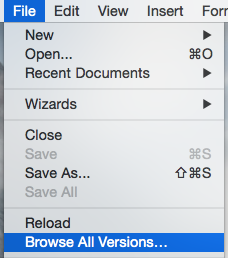

For instance, advanced features like macros and pivot tables aren't available, and exporting from Numbers to Excel will sometimes result in a hodgepodge of different sheets in Excel. More advanced Excel users will likely find Numbers frustrating to use and limited in scope. The same can't be said about the Excel-to-Numbers transition. Most advanced PowerPoint users should have an easy time getting acclimated to Keynote, and may find themselves becoming vocal converts to the Keynote cause. If you're controlling your presentation from creative concept to final delivery and don't need to play nicely with others. If you have cause to round-trip presentations with PowerPoint users inside or outside your workgroup, you may prefer to work in the most compatible app you can find. Keynote's animations often don't save gracefully out to PowerPoint, and there are frequently formatting and style mismatches when going between the two programs. One major hiccup for enterprise or collaborative use: the compatibility story between Keynote and PPT, while adequate for casual use, is not so spectacularly good as to be relied upon for daily use. PPT 2011 has also added or improved features to match up with Keynote, including a version of the much-beloved Instant Alpha masking tool to knock out image backgrounds on the fly, on-demand web playback of presentations to remote audiences and more.

#CAN NEOOFFICE OPEN PAGES DOCUMENT MAC#
The return of Visual Basic macros to PowerPoint 2011 on the Mac means that some automation and add-on options will be present there (or easier to implement), versus the limited AppleScript support in Keynote.
#CAN NEOOFFICE OPEN PAGES DOCUMENT WINDOWS#
On the flip side, expert PowerPoint users can point to specific drawbacks in Keynote for professional-level production work: no way to gracefully play audio across multiple slides, no left-side or top pasteboard area to stage animations and no support for the Flash plug-ins and other third-party tools common on the Windows version of PPT. Like many Apple products, Keynote strikes a nice balance between usability and advanced functionality. Alignment guides help you best position objects, and intuitive animation and build schemes make adding some shine to your presentation that much easier. It bests PowerPoint in what matters most in presentations: impact and style. For presentations, Keynote is, for most home office/small business users, superior to PowerPoint. While word processing is, well, word processing, differentiation for presentations often comes in the way the content is delivered, which can overshadow the substance of the content itself. Pages does support tracked changes, which are crucial for most multiparty Word workflows, but if your document roundabout depends on them heavily, you may want to verify that your colleagues are seeing things the way they are supposed to. If you're actively collaborating with Word users on the Mac or the PC, Pages should play nicely most of the time however, you may see some formatting quirks as you save back and forth to the. And if you need page layout flexibility, Pages' page layout tools makes for a more elegant and easy-to-use solution for documents that require you to position things around. However, if the end goal is to get your thoughts on paper and to have the flexibility to format these words the way you want to, Pages will do the job. Sure, things are in different places and the lingo may not be as familiar, and that may take some time getting used to. the Business edition), it's worth thinking about the match-up.įor basic word processing, Pages is up to the task against Microsoft Word. As there are great deals to be had today on Office ( $80 for Home/Student, which only lacks Outlook vs. Question is, can you go with alternatives? In particular, what about iWork? The answer is, it depends on the apps that you'll be using, the level of functionality you want from them, how you work and who you collaborate with. In the latest version, Office 2011, the product teams have added lots of zing both in performance and features.

No doubt about it: Microsoft Office is the 800-pound gorilla of productivity suites, both on the Mac and on Windows.


 0 kommentar(er)
0 kommentar(er)
